The one-stop-shop to hearing everything you need to know this week about what is happening in your fields.
This week’s featured agronomists are:
Scroll down to hear from your local agronomist.
WEST
Belle Plaine – Le Center – Le Sueur
Tim Malterer
Click to view video!
EAST
Pine Island – Cannon Falls -Goodhue -Lake City
 Casey Carlson
Casey Carlson
Corn is up and looking good in the area. Overall, stand counts are significantly better than 2021. This should provide the opportunity for more top end yield potential in 2022, if we continue to receive timely rains. Portions of the area are normal to 150% of normal rainfall. Some of these torrential rains may have leached nitrogen in the profile. The example below is a high yield corn on corn field run through one of our nitrogen modeling programs. It received above average rainfall for the spring season. The model is calling for more sidedress nitrogen then previous years. The exception would be 2019, a wet spring.
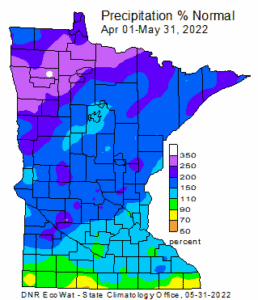 |
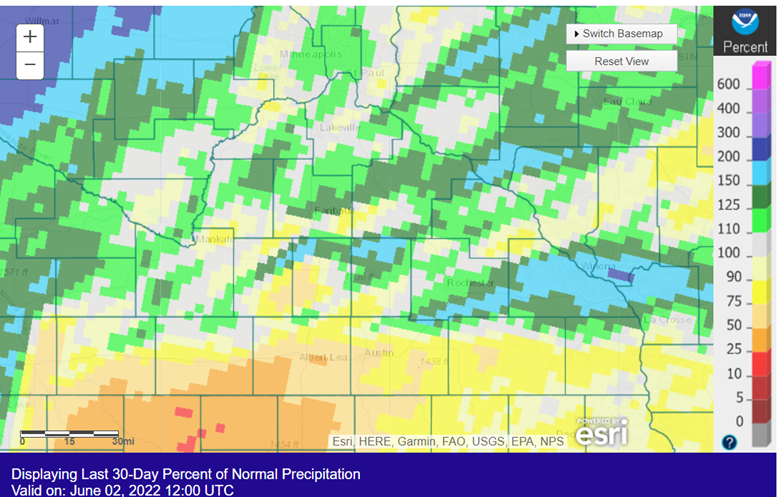 |
 |
|
CENTRAL
Morristown – Wanamingo – Kenyon
 Garrett Johnson
Garrett Johnson
There has been a lot of crops planted in between storms the last couple weeks. In our geography everyone is pretty much wrapped up, just a few fields of beans left to get planted. We have battled strong winds and storms that leave us short windows to get in the field. The storm last weekend with strong winds left some corn damaged, which is pictured below.
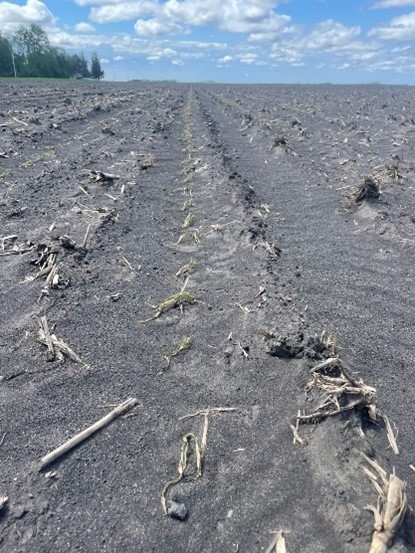
For corn not damaged in the storm, there is plenty that is approaching V2-V3 with good emergence. Soybeans that were planted early are VC and pushing right along.
Looking forward it is imperative that we keep an eye on the weed pressure. Our pre-emerge herbicides have done well but as we progress into summer, we will begin to scout for post-emerge applications.
 |
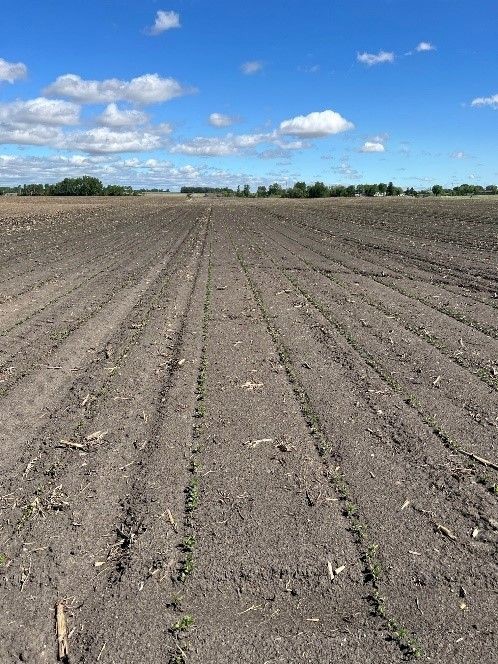 |
| Early planted corn is currently around the V2-V3 stage |
Early planted soybeans are currently around the VC stage |
SOUTH
Elgin – Lewiston – Stewartville
 Zach Thompson
Zach Thompson
Finally, the wind stopped blowing! Last week we received between 2 and 5” of rain. Most of the moisture came in a short amount of time and we are now seeing the effects. The beans that we planted just before the rain are having a hard time pushing through. It was a perfect storm – seed bed was prepped, a heavy rain shortly thereafter, followed by warm and windy conditions. This all dried out the ground and created a crust. Corn for the most part has emerged and looks great.
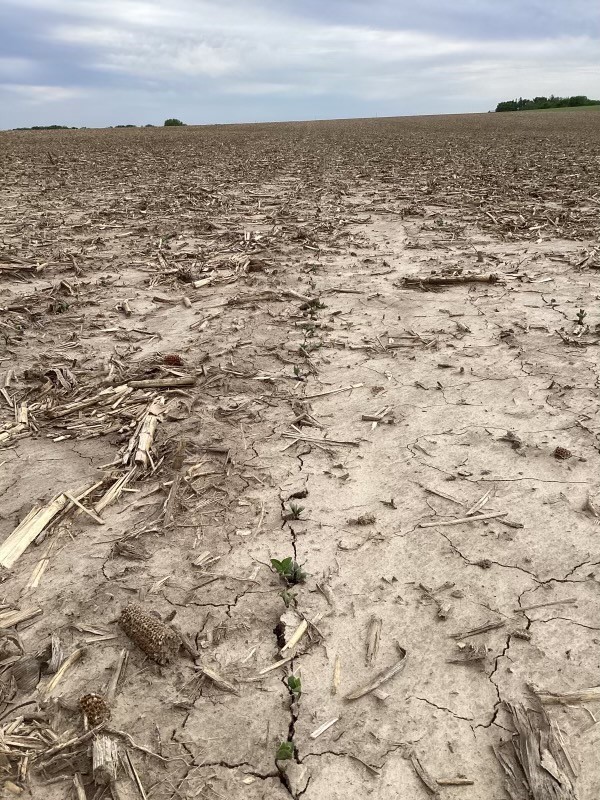 |
|
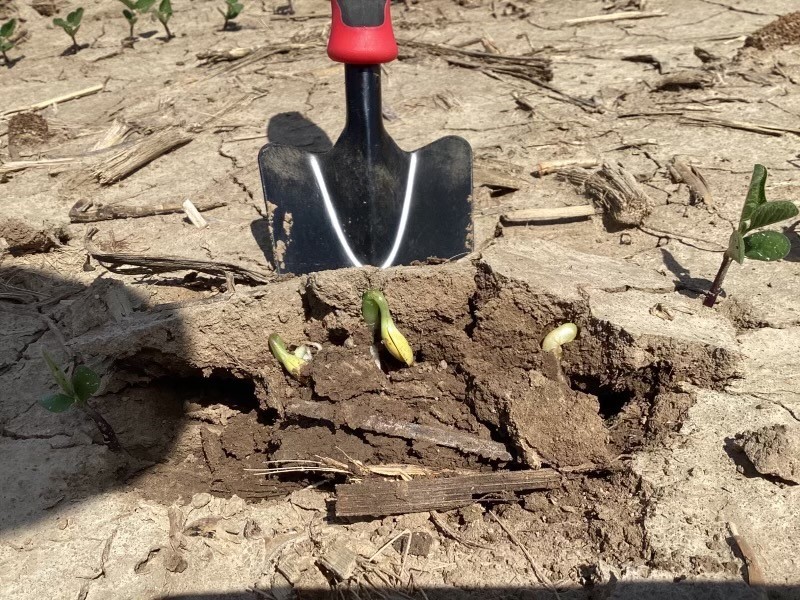 |
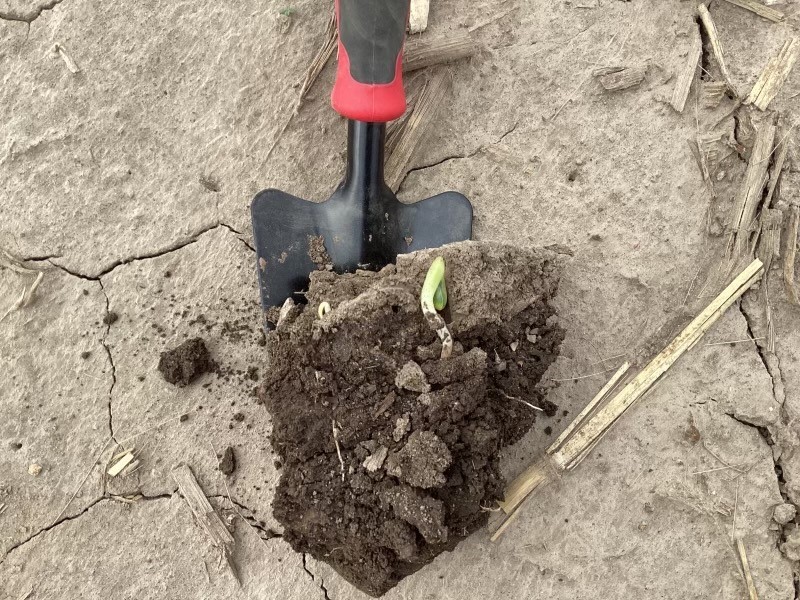 |
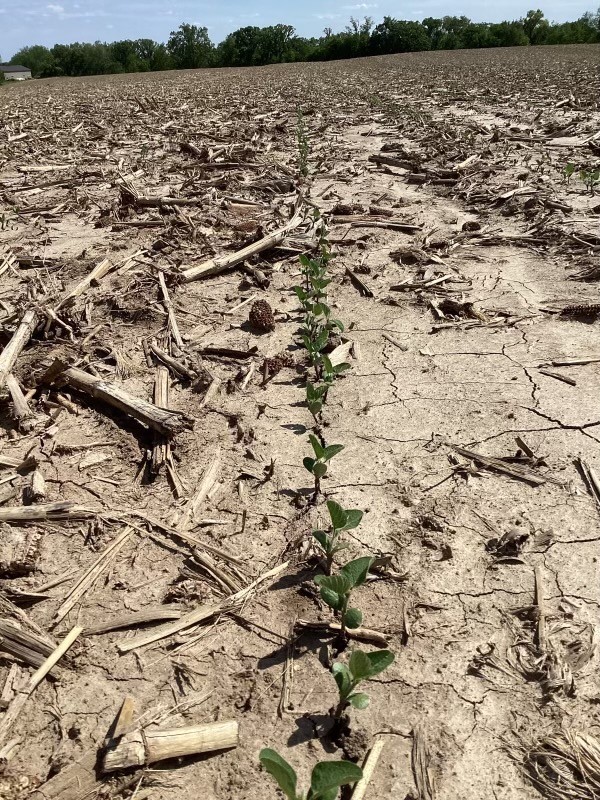 |
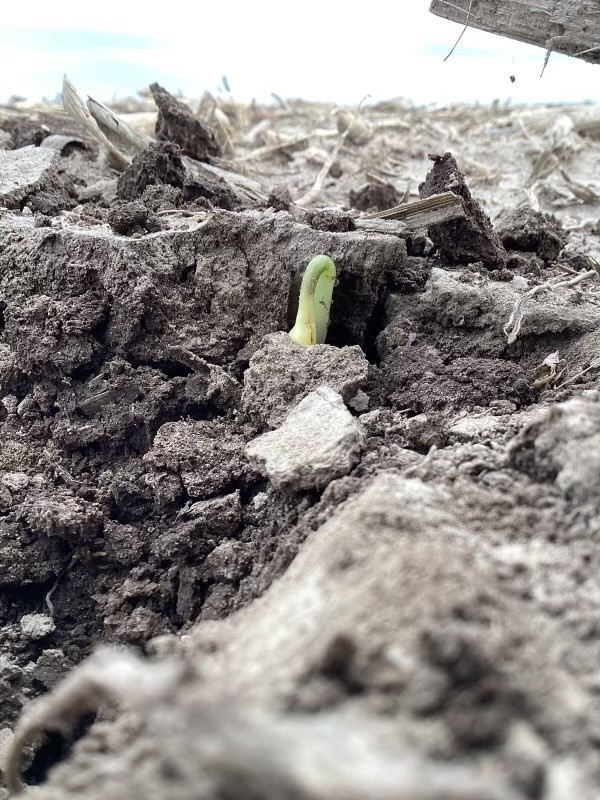 |
Alfalfa update: First crop alfalfa is coming along nicely. We did some trials which consisted of a fungicide and biological applied before 1st crop, when the alfalfa was 6” tall. This was applied by a helicopter. We learned some interesting things and are excited to share the results. Reach out to your Ag Partners agronomist to get more details.
WWAS
Ellsworth
 Luke Daninger
Luke Daninger
Corn and soybean planting have wrapped up for the most part throughout the geography. Corn is anywhere from germinating to V3. Soybeans are anywhere from just germinating to V2. Soybean emergence has been challenged due to crusting. Side dress fertilizer is starting to get under way, while corn spraying has been in full swing for quite some time. Remember, it is easier to keep a field clean than clean up a dirty one so we should be proactive in our crop protection programs.
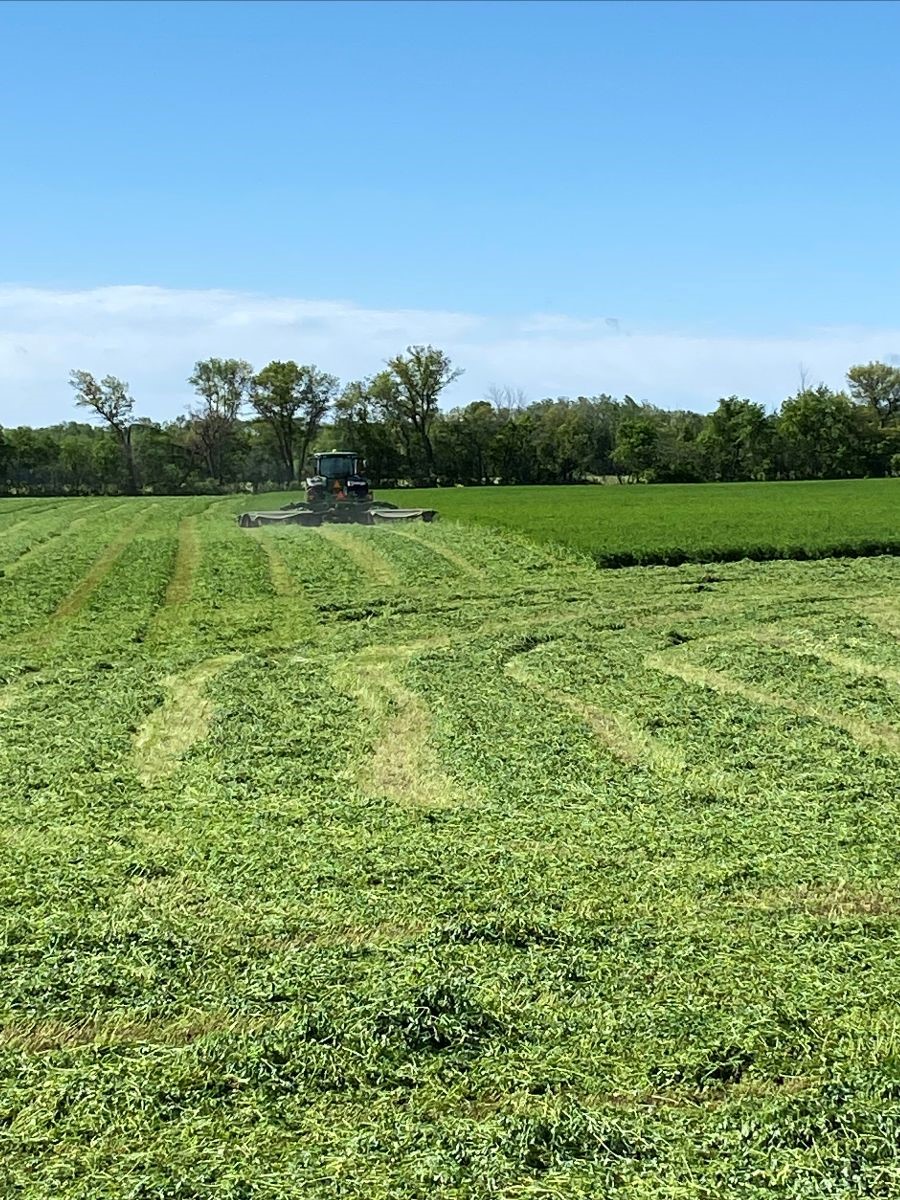 |
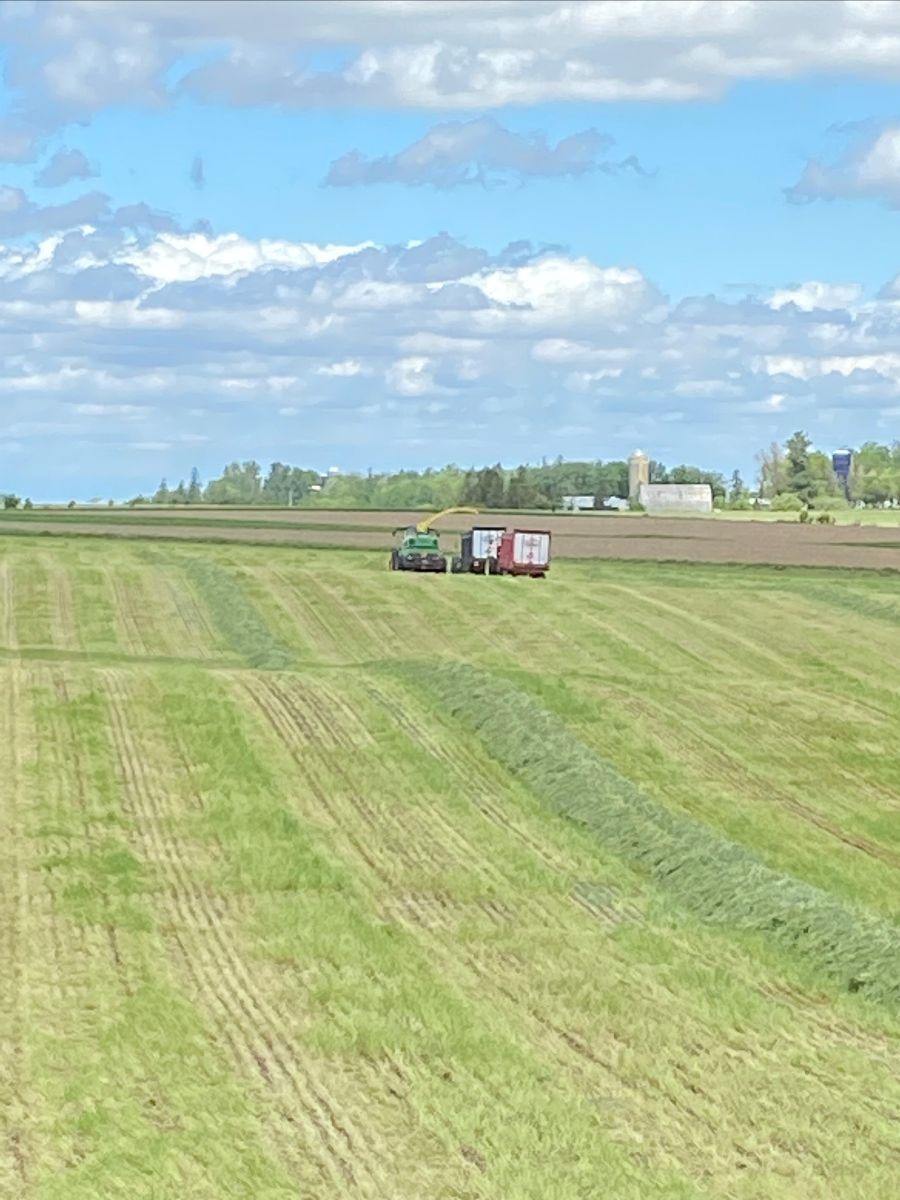 |
Alfalfa is being chopped throughout the geography. Yield reports have consisted of words such as “fantastic” and “huge crop”. From what I have seen, producers that take care of their hay are reaping the benefits. Don’t forget to feed the crop again after pulling the tons off that we are. For each ton of DM removed, it consists of 11 lbs P205, 50 lbs K20 and 7 lbs S. Along with this, boron should be supplemented for aid in cell division, cell formation and reproductive growth.



